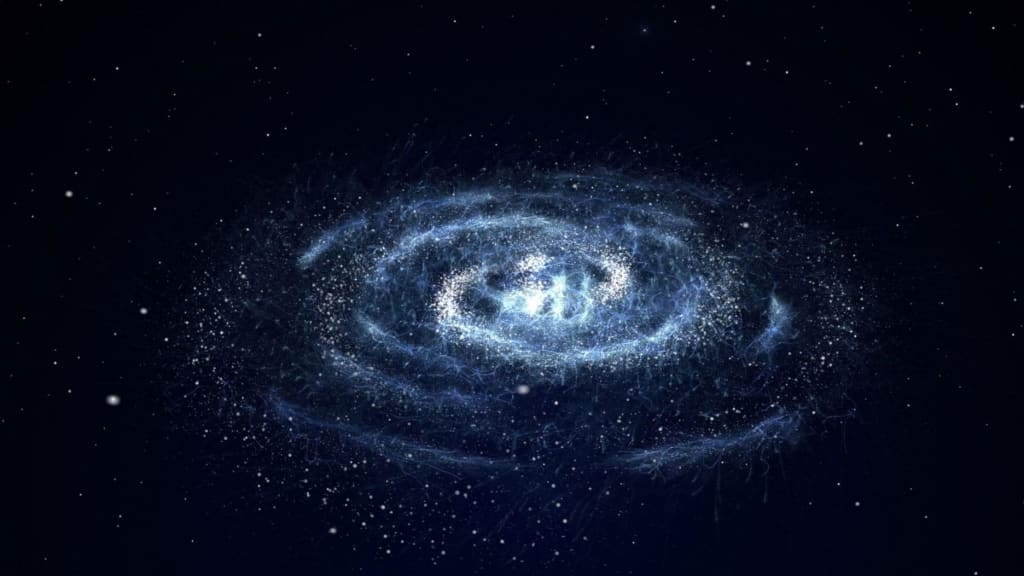SPACE TELESCOPE UNCOVERS MASSIVE GALAXIES FROM COSMIC DAWN
In a recent study, astronomers using Hubble data have identified a collection of massive galaxies that formed just 800 million years after the Big Bang. These galaxies, known as "cosmic dawn galaxies,"

The Hubble Space Telescope is a space-based observatory that has revolutionized our understanding of the universe. It was launched into orbit by the Space Shuttle Discovery on April 24, 1990, and has been providing breathtaking images and valuable scientific data ever since.
Named after the renowned American astronomer Edwin Hubble, the telescope is a joint project between NASA and the European Space Agency (ESA). It is located approximately 547 kilometers above Earth's surface and orbits the planet once every 97 minutes.
The Hubble Space Telescope is equipped with a wide range of advanced instruments that allow it to capture images and gather data across the electromagnetic spectrum, from ultraviolet to near-infrared. Its primary mirror is 2.4 meters in diameter, which allows for extremely high-resolution images and precise measurements.
One of the major advantages of the Hubble Space Telescope is its location above Earth's atmosphere. By being above the blurring effects of the atmosphere, Hubble can capture incredibly sharp and clear images of distant celestial objects. This has led to numerous groundbreaking discoveries and advancements in astrophysics.
Throughout its three decades of operation, the Hubble Space Telescope has made numerous significant contributions to various fields of astronomy. It has helped scientists estimate the age of the universe, study the formation and evolution of galaxies, and investigate the properties of dark matter and dark energy. It has also provided detailed images of planets within our solar system, including breathtaking views of distant nebulae, star clusters, and galaxies.
The Hubble Space Telescope's observations have not only expanded our knowledge of the cosmos but have also captivated the public's imagination. Its stunning images of distant galaxies and celestial phenomena have become iconic, inspiring awe and wonder about the vastness and beauty of the universe.
Over the years, the Hubble Space Telescope has undergone several servicing missions to repair and upgrade its instruments. These missions have extended its lifespan and ensured that it remains at the forefront of astronomical research. However, with the launch of the James Webb Space Telescope in the near future, Hubble's role will transition to a complement rather than a replacement, as the two telescopes will work together to expand our understanding of the universe.
The Hubble Space Telescope, one of NASA's most iconic and influential missions, has once again pushed the boundaries of our understanding of the universe. In a recent study, astronomers using Hubble data have identified a collection of massive galaxies that formed just 800 million years after the Big Bang. These galaxies, known as "cosmic dawn galaxies," offer a rare glimpse into the early stages of galaxy formation and shed light on the evolution of the universe.
The findings, published in the journal Nature, are based on observations made by Hubble over a period of several years. By employing a technique called gravitational lensing, which uses the bending of light by massive objects to magnify distant objects, the astronomers were able to detect these faint and distant galaxies that would otherwise be beyond the reach of current technology.
The discovery of these massive galaxies is a significant breakthrough in our understanding of the early universe. It challenges existing theories of galaxy formation, which suggest that massive galaxies should have taken longer to form and mature. The fact that these galaxies existed so soon after the Big Bang implies that the process of galaxy formation was much faster and more efficient than previously thought.
The cosmic dawn galaxies are estimated to be about 30 times smaller than the Milky Way, yet they contain a similar amount of stars. This suggests that they went through a rapid phase of intense star formation, known as a "starburst," during the early stages of their evolution. The researchers believe that these galaxies were likely the building blocks of the massive galaxies we see in the present-day universe.
In addition to their size and age, these galaxies also exhibit intriguing characteristics. They have a high concentration of young, massive stars and are surrounded by large amounts of dust and gas, which are essential ingredients for the birth of new stars. These findings provide insights into the conditions that prevailed during the early stages of the universe and offer clues about the mechanisms that drove the formation of galaxies.
The discovery of these cosmic dawn galaxies would not have been possible without the Hubble Space Telescope. Since its launch in 1990, Hubble has revolutionized our understanding of the cosmos and has been instrumental in numerous groundbreaking discoveries. Its ability to capture sharp and detailed images of distant celestial objects has allowed astronomers to unravel the mysteries of the universe and expand our knowledge of its origins.
As we continue to explore the cosmos, missions like Hubble will remain crucial in unlocking the secrets of the universe. The study of cosmic dawn galaxies is just one example of how space telescopes can provide us with unprecedented insights into the early stages of the universe and shape our understanding of its evolution. With future missions like the James Webb Space Telescope on the horizon, we can expect even more groundbreaking discoveries that will push the boundaries of our knowledge and inspire new questions about the cosmos.
About the Creator
Micheal
c






Comments (1)
valuable information.